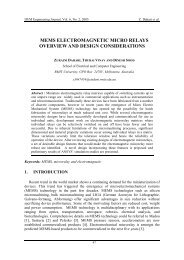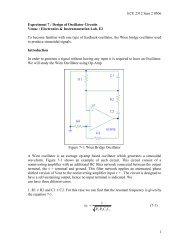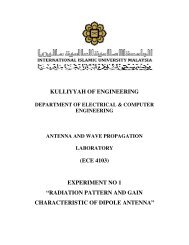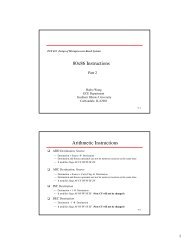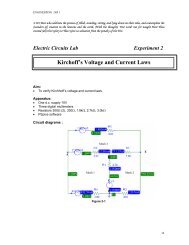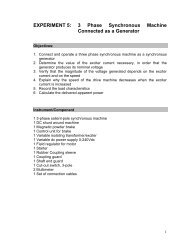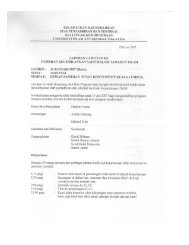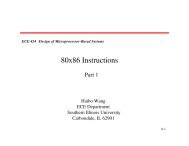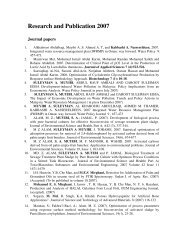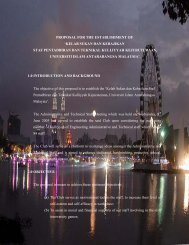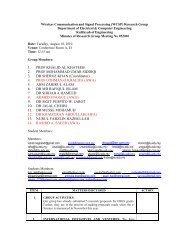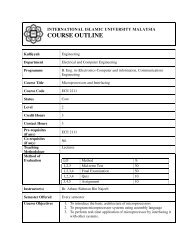AC Peak, RMS, and Phase Measurement
AC Peak, RMS, and Phase Measurement
AC Peak, RMS, and Phase Measurement
You also want an ePaper? Increase the reach of your titles
YUMPU automatically turns print PDFs into web optimized ePapers that Google loves.
ENGINEERING lAB 1<br />
When time-varying ac voltages such as a sinusoidal voltage are applied to a circuit,<br />
the circuit laws that were studied earlier still apply.<br />
Ohm’s law <strong>and</strong> Kirchhoff’s laws apply to ac circuits in the same way that they apply to<br />
dc circuits.<br />
Apparatus:<br />
• Oscilloscope<br />
• Function generation<br />
• Digital Multimeter<br />
• Capacitor 1µF, 10µF<br />
• Resistance 100 Ω,<br />
• Breadboard<br />
1µF/10 µF<br />
+<br />
10V p-p<br />
1 KHz<br />
Osc.<br />
Ch-1<br />
10V p-p<br />
1 KHz<br />
Osc.<br />
Ch-1<br />
100Ω<br />
Osc.<br />
Ch-2<br />
_<br />
Fig. 5-3(a)<br />
Fig. 5-3(b)<br />
Method:<br />
1. Connect the output of the function generator directly to channel 1 of the<br />
oscilloscope as shown in Fig 5-3(a). Set the amplitude of the wave at 10V <strong>and</strong><br />
the frequency at 1 kHz. Select sinusoidal wave shape.<br />
2. Sketch the wave shape observed on the oscilloscope. Determine the time period<br />
of the wave <strong>and</strong> calculate the frequency.<br />
3. Measure the ac <strong>and</strong> dc voltage.<br />
4. Change the frequency to 500Hz <strong>and</strong> note what happens to the display of the<br />
wave. Repeat when the frequency is increased to 2 KHz with the increment of<br />
500Hz.<br />
5. Construct the circuit as shown in Fig. 5-3(b) considering 1µF capacitor.<br />
6. Measure the input voltage <strong>and</strong> the input current with the oscilloscope. In order to<br />
measure current flowing through the circuit, measure the voltage across the<br />
resistor by using oscilloscope <strong>and</strong> then divide by resistor which gives the current<br />
flowing through the circuit. The ratio between the voltage <strong>and</strong> the current gives<br />
the magnitude of the impedance, Z. Record the results in Table 5-1.<br />
7. Observe the wave shapes of oscilloscope channels 1 <strong>and</strong> 2 simultaneously. Find<br />
the frequency of both the waves <strong>and</strong> amplitude from the display. Determine the<br />
phase difference between the two waves. The phase difference is give by<br />
∆t o<br />
θ = 360 , where ' ∆ t ' is the time delay between the two waves. Also observe<br />
T<br />
which of the two waves lead. Note that the voltage in channel 2 is the voltage<br />
across a resistance <strong>and</strong> hence this is in phase with the current flowing in the<br />
circuit. Find the impedance of the circuit by oscilloscope.<br />
49



